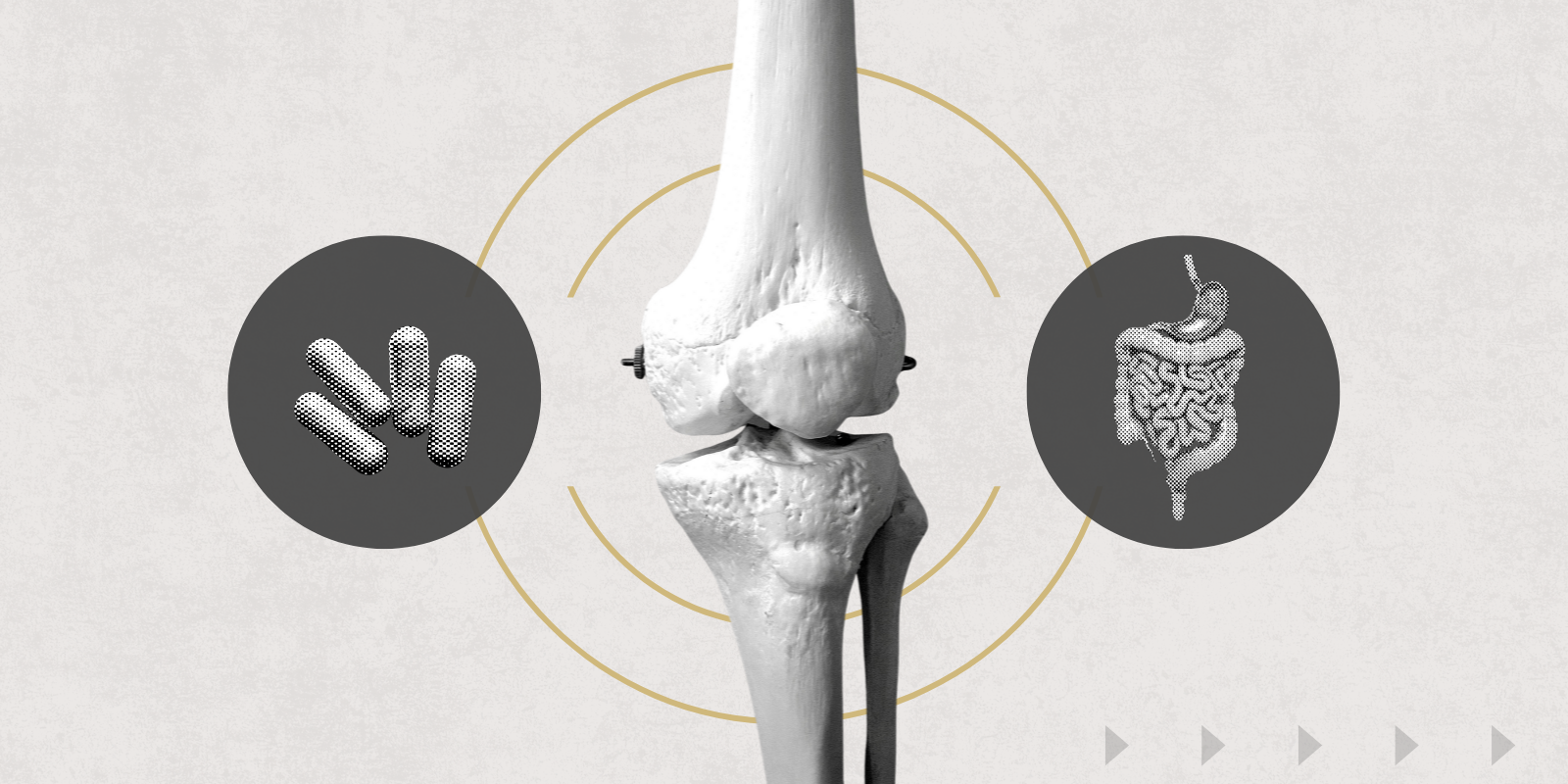New CU Anschutz Research Explores the Connection Between the Gut and Skeletal Health

Trillions of tiny microbes that live in the gut often have a big impact elsewhere in the body. Research continues to find that they play a role in many physiologic functions, from the immune system to the central nervous system.
Now, scientific investigators believe the gut microbiome can be an important factor in skeletal health.
Honey Hendesi, MD, PhD, instructor of orthopedics at the University of Colorado Anschutz School of Medicine, works with a team of researchers led by Michael Zuscik, PhD, professor of orthopedics, to learn about how the gut microbiome impacts bones, joints, and skeletal conditions that affect millions of people around the globe. A trained cellular biologist, Hendesi is interested in the mechanisms behind what’s happening with gut microbes and how it translates to the skeletal system.
“We’ve known that there is a connection between the gut and brain and other organs and tissues, and especially in diseases with underlying inflammatory mechanisms. These tissues can be highly impacted and regulated by shifts in the gut microbiome, and that’s why some orthopedic conditions, such as osteoarthritis — the most common form of arthritis and the leading cause of disabilities in the U.S. — have come to the forefront of the research of gut–joint connection,” she says.
Gut health and osteoarthritis
More than 655 million people around the world live with osteoarthritis (OA), a destructive joint disease with no approved disease modifying drug.
“When there are no modifying drugs available, shifts in lifestyle — both as a preventative measure and also as a therapeutic measure — become important,” Hendesi says. “It’s critical to understand the role microbiome plays in the underlying development of osteoarthritis, which is by contributing to that inflammatory process.”
A literature review published this year by Hendesi and a team of researchers shows that a growing body of evidence suggests that the gut microbiome may influence the progression of osteoarthritis.
In a clinical study included in the review, Canadian researchers observed improvement among obese patients with knee pain who took six months of prebiotic oligofructose supplementation, a type of fiber that’s beneficial for gut bacteria and has been linked to inflammation reduction.
With more research, the investigators believe that prebiotics may be a promising option for managing knee osteoarthritis in adults with obesity.
The big picture, Hendesi says, is that a healthy gut has lots of benefits for the human body.
“A healthy microbiome overall means a healthier host,” Hendesi says. “There is a symbiotic relationship between us and the microbes that are living within our body. When we have a healthy microbiome, this can have improved overall health, which includes conditions like OA.”
Overcoming research challenges
Like other areas of gut microbiome research, there are challenges that come with the complexities of microbiome-host interaction and identifying the link between the gut’s many microorganisms and bone and joint health.
In OA research, Hendesi and her colleagues say one limitation is that studies often recruit patients with diverse osteoarthritis etiologies, so there’s variability in the microbiome. Factors such as age, obesity, genetics, and previous joint injuries can influence the severity of OA. There’s also a lack of longitudinal tracking of microbiome changes over time in relations to OA progression, and this hinders the discovery of key microbial players.
However, new technology is making new research possible.
“In the last decade, we’ve seen a lot of progress in the microbiome research field,” Hendesi says. “In previous studies, we used amplicon sequencing, which has a lower resolution and more limitations in detecting the function of microbes. Right now, we are in a position where whole genome sequencing is becoming more affordable, and we can shift into using those technologies and computational methods that can better detect microbiome species and their complex functions and interactions.”
Intermittent fasting
Understanding the gut microbiome may help improve other challenges in the skeletal system, too. In individuals with obesity or Type 2 diabetes, fracture healing can be delayed, prolonged, or even result in a nonunion fracture, which Hendesi says can be devastating.
“There are cases that lead to amputation and lifetime disabilities because of the nonunion, which can happen in 5% to 10% of all fractures,” she explains. “Nonunion has many different risk factors, but obesity and diabetes are among them, and again, there isn’t any type of pharmacological intervention to accelerate healing in this population to prevent a delay in fracture healing or nonunion.”
Just like in OA research, Hendesi and researchers are investigating possible lifestyle modulation approaches that may be helpful. Intermittent fasting, where an individual alternates normal eating with periods of fasting, is already becoming a possible solution in improving bone fracture healing in obese and diabetic populations.
In a study led by Hendesi publishing in the journal Bone Reports in December, CU Anschutz researchers say their research found that bone healing outcomes in an animal model were heightened when intermittent fasting was at play.
Utilizing intermittent fasting led to reduced body weight and improved glucose tolerance and significantly altered the gut microbiota for the animal models on a high-fat diet, “including an increased abundance of short-chain fatty acid producing bacteria, microbiome metabolites known for their positive effect on bone density, and a reduction in various pro-inflammatory microbes.”
That research could provide a natural segway into how intermittent fasting could impact human bone health.
“The International Food Council Survey shows that intermittent fasting is the third most common dietary intervention that Americans use, and we think that it has lots of potential to be used for skeletal health, including bone health and bone healing,” Hendesi says.
“Our preliminary data shows that indeed, intermittent fasting can accelerate fracture repair in obesity by increasing the amount of bone that forms at the site of the fracture, which is very promising. It can also cause some distinct changes in the gut microbiome and in metabolites that microbes produce, which all have potential to induce that bone formation at the site of fracture.”
Researchers aren’t yet sure what exact mechanisms causes this, but further investigation, especially using biomedical informatic methodologies, may help reveal key gut microbes that impacts bone health, repair, and the inflammation, that affects millions of people each year.
“We have great partnerships to delve further into this area,” Hendesi says. “Using big data and muli-omic approaches will be critical.”
link







